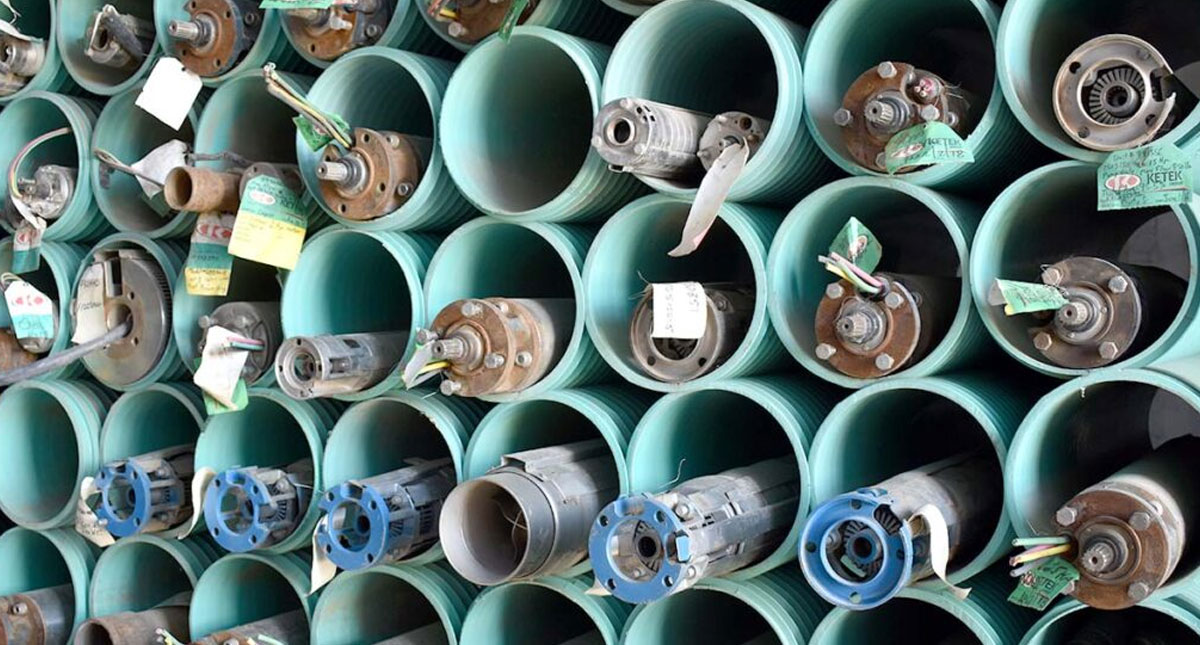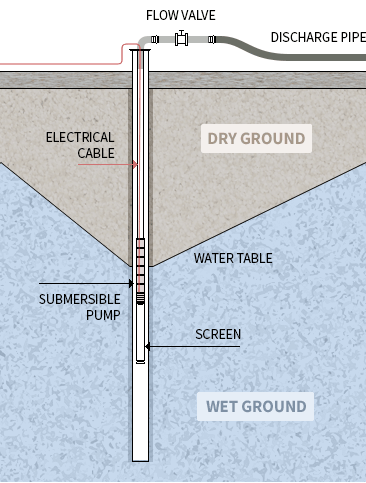Wellpoint Dewatering
Sucking water out of the ground allows excavations to be dug safely

Dewatering via deep wells uses the same drilling and pumping technologies as water supply wells, but in this case the goal is to remove the groundwater. To create the necessary “cone of depression,” several wells are drilled close to each other and fitted with submersible pumps. Working together, they create a hydraulic gradient and water is drawn to the wells. As pumping continues, the cones of depression expand, lowering the local water table.

Deep wells enable excavations to be made safely and effectively and are often required before excavations for pipelines, foundations, shoring and cellars. Deep well dewatering will stabilise the slope of an excavation and allow proper compaction of backfill for underground facilities.
The wells are drilled just outside the area of the proposed excavation, every 20 metres or so, depending on the project requirements. Electric submersible pumps with riser pipes attached are lowered into the wells. These pumps have small diameters so they can fit down the wells, which are usually between 12 and 35 centimetres in diameter, depending on the flow rate required to dewater effectively.
The most common form of pumping is by electric submersible pumps, which are lowered inside a screen so water can flow more freely. Large drawdowns can be achieved, depending on the number and depth of the wells drilled and hydrogeological conditions.
Deep well dewatering is normally suited to relatively deep excavations (more than five metres) in soil or rock where permeability is either moderate, like sand, or high, like gravel. For shallower excavations, wellpoint dewatering may be the way to go.
